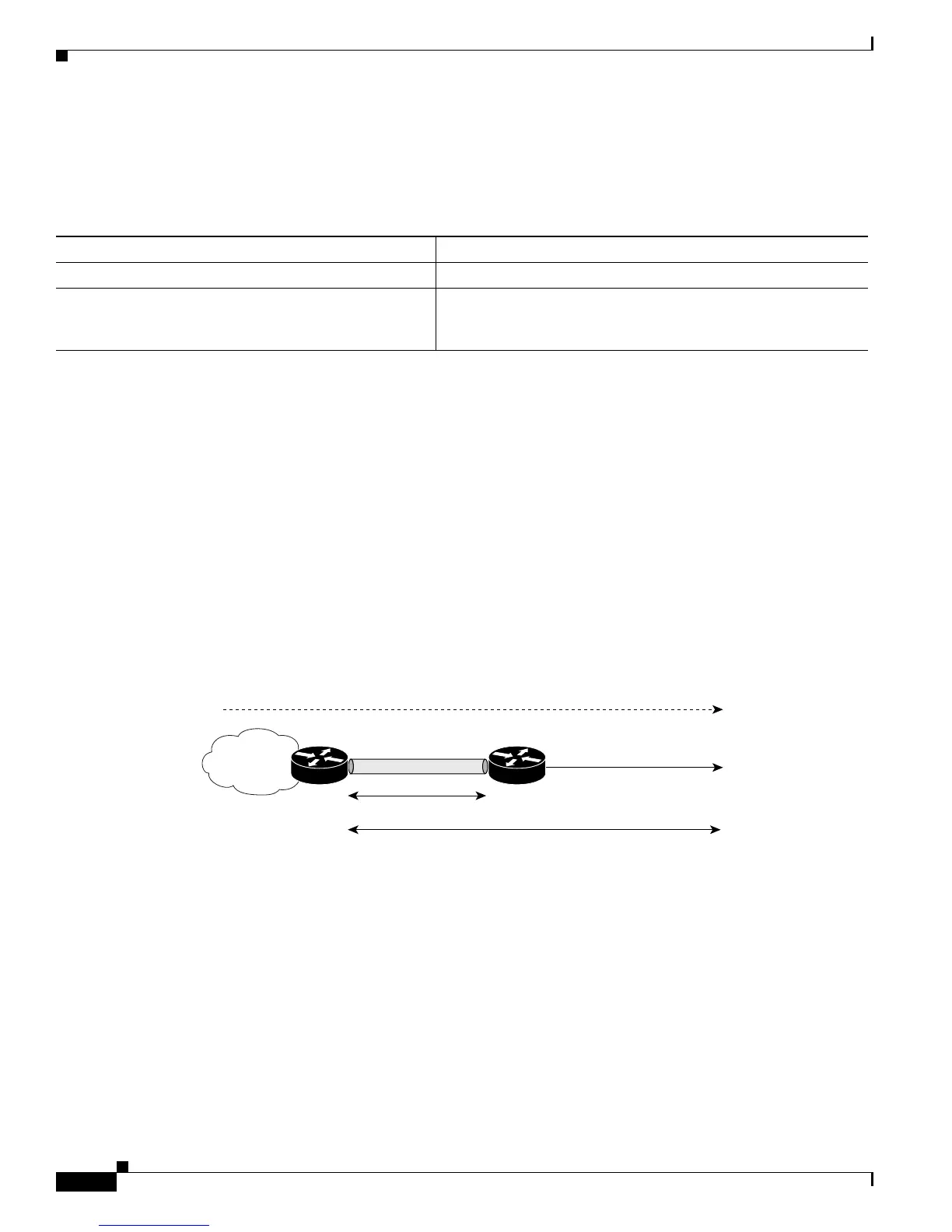18-24
Cisco 10000 Series Router Quality of Service Configuration Guide
OL-7433-09
Chapter 18 Regulating and Shaping Subscriber Traffic
Shaping and Queuing Per-Session Traffic on LNS
Verifying Service Policies on IP Sessions
To verify service policies on IP sessions, enter any of the following commands in privileged EXEC
mode:
Shaping and Queuing Per-Session Traffic on LNS
The Per Session Shaping and Queuing on LNS feature provides the ability to shape (for example, transmit
or drop) or queue (for transmission later) the traffic from an Internet service provider (ISP) to an ISP
subscriber over a Layer 2 Tunneling Protocol (L2TP) Network Server (LNS). The outgoing traffic is shaped
or queued on a per-session basis.
Shaping and queueing traffic on a per-session basis:
• Helps to avoid traffic congestion and allows the ISP to adhere to the Service Level Agreement (SLA)
established for managing traffic.
• Provides a high degree of granularity for managing traffic on the network. Figure 18-1 is a sample
topology for per-session shaping and queuing on an LNS.
Figure 18-1 Per-Session Shaping and Queuing Topology—PPP Sessions Forwarded
In this simplified topology example:
1. Downstream traffic is forwarded from the ISP (the source) to an ISP subscriber (the destination)
during a PPP session.
2. From an LNS at the ISP, the traffic is transmitted over an L2TP tunnel to an L2TP Access
Concentrator (LAC) and then to the subscriber.
3. Shaping and queuing the per-session traffic on an LNS can take into account the overhead between
the LNS, LAC, or E-DSLAM-to-CPE by using the user-defined overhead in the shape or bandwidth
command.
4. To specify the overhead offset in child and parent policies, use the bandwidth and shape
commands. The offset values and encapsulation types must match in the child and parent policies.
Command Purpose
show class-map type traffic
Displays traffic class maps and their matching criteria.
show policy-map type service
Displays the contents of Intelligent Service Gateway (ISG)
service policy maps and service profiles and session-related
attributes.
LNS LAC
Downstream traffic
L2TP tunnel
PPP session
Subscriber
127500
ISP

